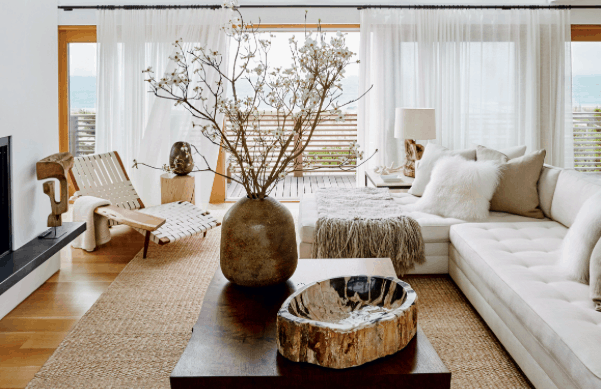
Credit: Michael Kohr’s living room
by guest author Katie Canfield
As both a designer and as a student of yoga, I have learned that the feeling of zen is not a luxury in life, but a necessity. Zen is a sense of peacefulness where you can get away from the hustle and bustle of life, and take time for your own self. By taking time to be present in the moment and not be caught up in worries of the future, or regrets of the past, we can focus on ourselves and take care of our own mental health. By reconnecting with ourselves, we regain the energy to give our time and attention to the people that matter in our lives. Everyone should have some sort of space they can go to recharge and relax. This doesn’t need to be a “meditation” room. It could be your bedroom, your bathroom, your living room, or even just a little corner of it.
Involve all your senses
Interior designers do so much more than make a room aesthetically pleasing. They create spaces that evoke feelings and create atmosphere. In order to create a feeling of zen, you need to involve all the senses of the body.
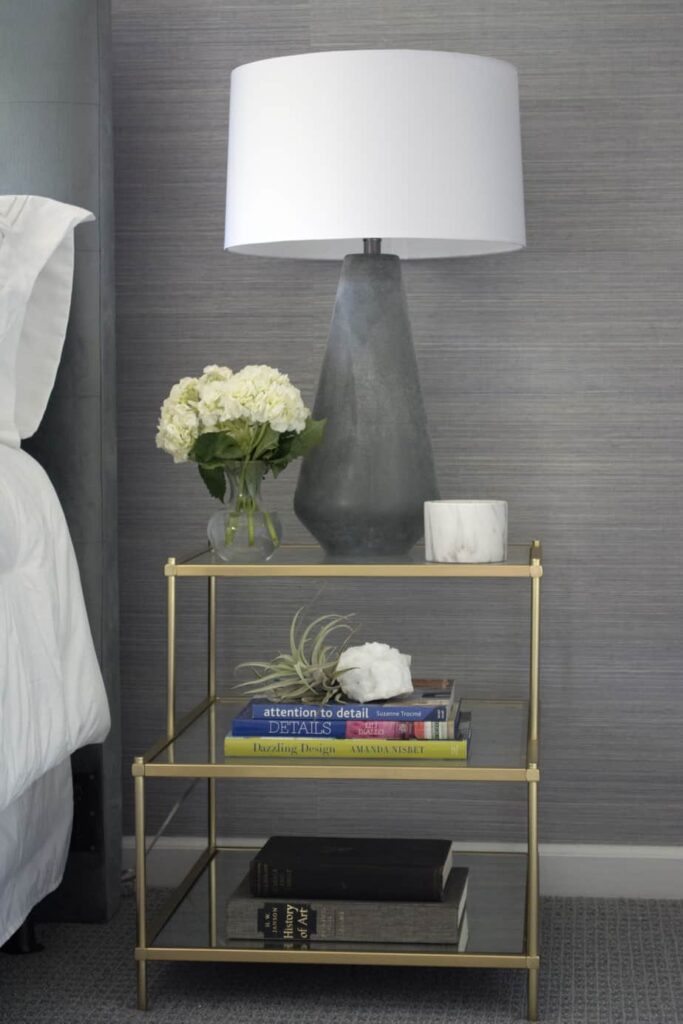 Touch: Soft and inviting textures like fluffy Mongolian lamb pillows, and cashmere blankets make you want to curl up and relax.
Touch: Soft and inviting textures like fluffy Mongolian lamb pillows, and cashmere blankets make you want to curl up and relax.
See: Visually adding a soft textured natural wallcovering can create a subtle pattern that is relaxing to the eye, and adds a layer of coziness that can’t be achieved with regular wallpaint. Having simple and clean lines in furniture and abstract patterns create a sense of calm.
Hear: Paying attention to acoustic properties of the room by adding soft surfaces and textiles help to make a space, so you can really escape the world. Remember that tile or wood floors will bounce sound around a room much more than a carpeted space will.
Taste/Smell: The scents of fresh cut flowers or a plant, and even an essential oil diffuser can help relax the mind and body to help achieve a feeling of zen. Using essential oils can also be used to help focus or clear the mind of everyday stress and allow for relaxation or meditation, in addition to being safer and less toxic than traditional candles.
Zen Bedroom
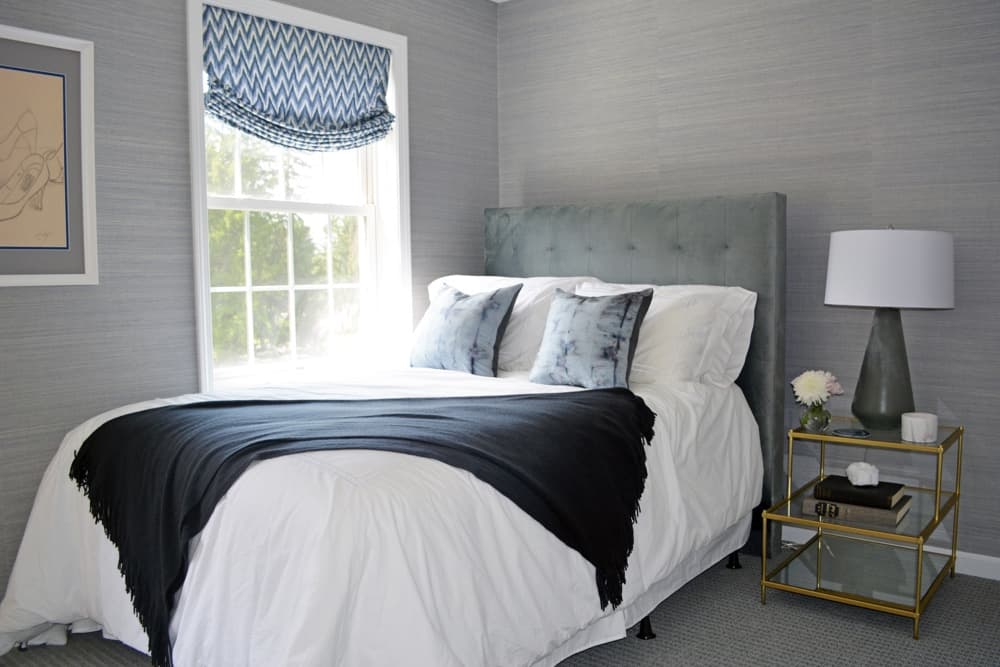
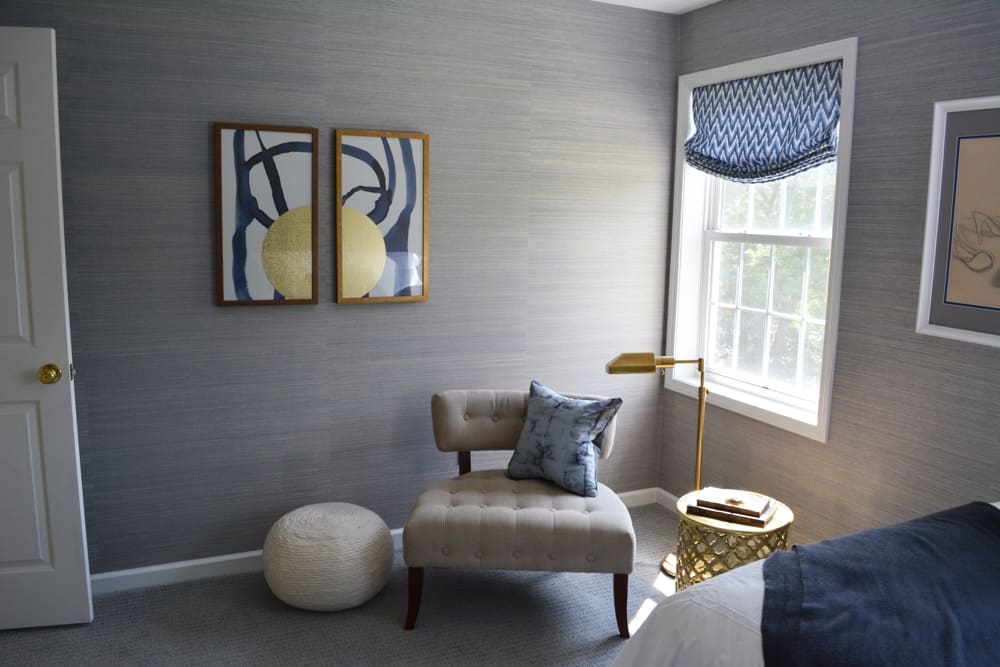
A bedroom is a great place to create a space that helps people experience zen. Most people want their bedroom to be a retreat; quiet, private and peaceful. A monochromatic palette of blues was used in this guest bedroom to create a sense of quietness. It’s low contrast, but runs the full spectrum from the crisp whites to the dark inky indigos. These different shades work together harmoniously to keep the space feeling relaxed without becoming sterile. Brass tones add warmth to metal finishes that are otherwise cool to the touch. (Photo of guest bedroom from Studio KC)
Zen Living Room
This living room by Tina Ramchandani is very tranquil, you’ll notice that these calming spaces don’t have geometric patterns, but have softer ways of creating contrast. The decorative painting in this living room creates an ombre effect from warm gray to indigo.
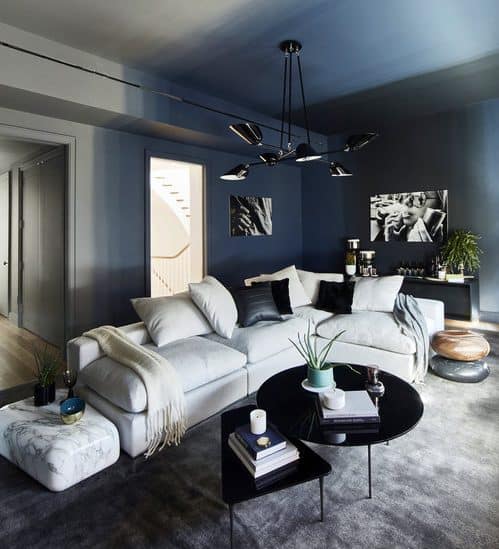
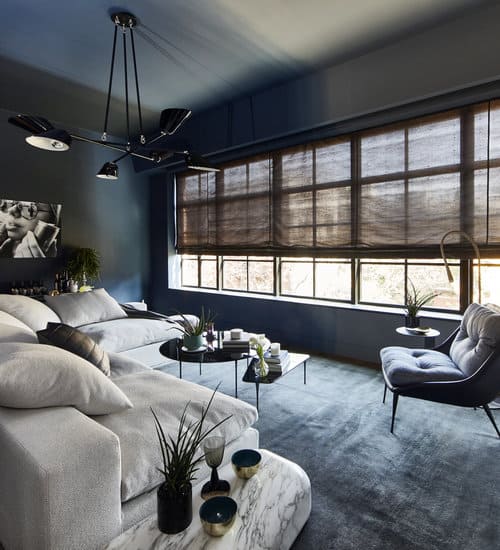
One side of the room is enveloped in cozy darkness, and the other is a brighter space, but still very muted and warm. The sheen of the fibers of the rug create a sense of movement without being jarring. Dark tables mixed with the light sofa create a harmonious space, and create balance, despite one side of the room being dramatically darker than the other.
Small, Personal and Natural
Having natural elements like plant life in your space can be transformative. If you don’t have a green thumb, try a low maintenance plant like tillandsia, or succulents. Having something natural indoors helps reconnect us with the earth, and ourselves.

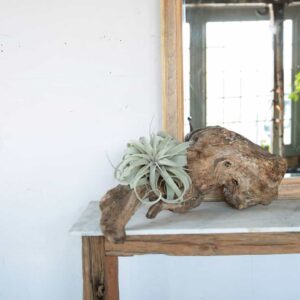
If you need inspiration, check out Terrain (right in Westport, CT). Surrounding yourself with items of personal value can help bring you back to what truly matters in life. I keep small items from trips around the world nearby, to remind me of the people and cultures I’ve experienced. To remember that we are all connected, and what a truly beautiful world it is that we live in. Zen is all about reconnecting with yourself, so whatever you have in your space should be something that truly speaks to you!

Katie Canfield is the founder and principal designer at Studio KC. Studio KC got its humble start in 2015 when Katie was just 23 years old. While she was freelancing with other interior designers in the NY and CT area she also became a go-to designer for local contractors and trades that needed a designer’s help for their clients whether it be for custom cabinetry drawings or plans for a gut renovation on an entire home.
Katie Canfield’s design aesthetic is eclectic and flexible. She delights in the marriage between old and new- keeping spaces approachable but still matching each client’s unique aesthetic and family narrative. Her passion for design keeps her motivated and constantly on the hunt for new trends and materials. Her broad experience includes an art history background, study at the Accademia Italiana in Florence, a stint with the renowned Manhattan firm Amanda Nisbet Design, as well as collaborations with builders and designers across the tri-state area. She’s seen it all: from gutting prewar Manhattan apartments to new construction in the ‘burbs.





